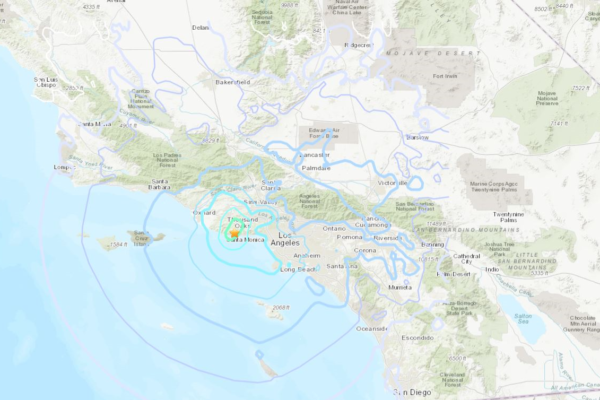On the morning of September 12th, a 4.7 magnitude earthquake struck the Los Angeles area, affecting millions of people in the region. Residents in the San Gabriel Valley, where many Chinese live, as well as those in Inland Empire, Orange County, and coastal areas, told a reporter from Dajiyuan that they felt the earthquake.
According to the United States Geological Survey (USGS), the earthquake occurred at 7:28 a.m. with the epicenter located 4.3 miles north of Malibu at a depth of approximately 7.2 miles.
In recent times, there has been a series of frequent earthquakes in Southern California, leaving many Chinese residents on edge. In the midst of a heatwave with temperatures soaring into the triple digits Fahrenheit in many areas, two earthquakes measuring 3.5 and 3.9 magnitudes struck near Ontario, southeast of San Bernardino County on Saturday morning. Some residents who had earthquake alerts set on their phones reported feeling the tremors shortly after receiving the warnings.
Speculations arose among the public linking the increased seismic activity to the hot weather, but the USGS emphasized that high temperatures do not cause earthquakes. Earthquakes are not directly related to cold, heat, or rainy weather.
The number of small earthquakes in California in 2024 has reached a record high. The recent surge in seismic activity has raised concerns about the possibility of a major earthquake occurring. Lucy Jones, a seismologist at the California Institute of Technology, pointed out that the earthquake frequency in 2024 has surpassed any year since 1988, urging residents to be prepared.
Xinyu Li, a doctoral student in seismology at the University of California, Riverside, mentioned that the San Andreas Fault runs through the entire state of California, making earthquakes a common occurrence. Based on historical observations of earthquakes, experts cannot accurately predict when a “catastrophic” super earthquake might strike. However, California has strict regulations in place for building structures and disaster preparedness. Li advised the public not to panic but to stay prepared for earthquakes on a regular basis, assuring that proper measures are in place for coping with a major earthquake.
Li explained that the 1300-kilometer San Andreas Fault, located at the boundary of the Pacific Plate and the North American Plate, spans across southwestern California, northern and eastern lower California in Mexico. Earthquakes occur due to the movement of these plates, a normal geological process. Li’s research focuses on analyzing the timing of earthquakes and identifying seismic signals to pinpoint the earthquake source. By analyzing the temporal and spatial information, researchers can deduce how and when earthquakes occur in a specific time and space, understand the characteristics of earthquakes, and educate the public on the current seismic situation and how to prevent earthquake-related disasters. ◇

